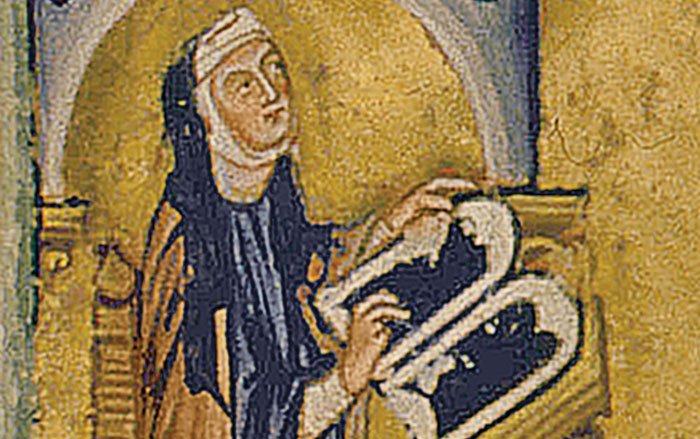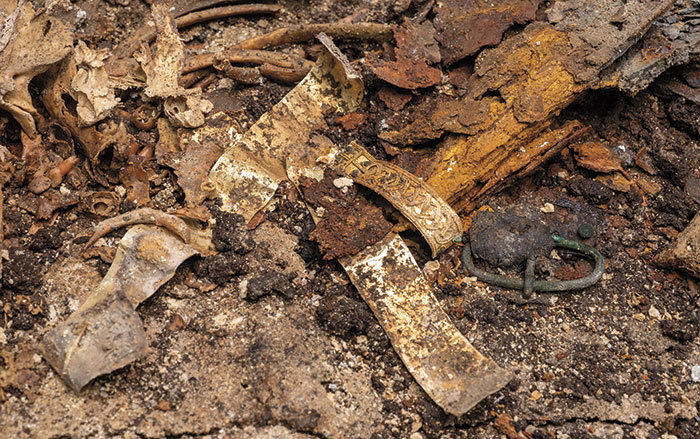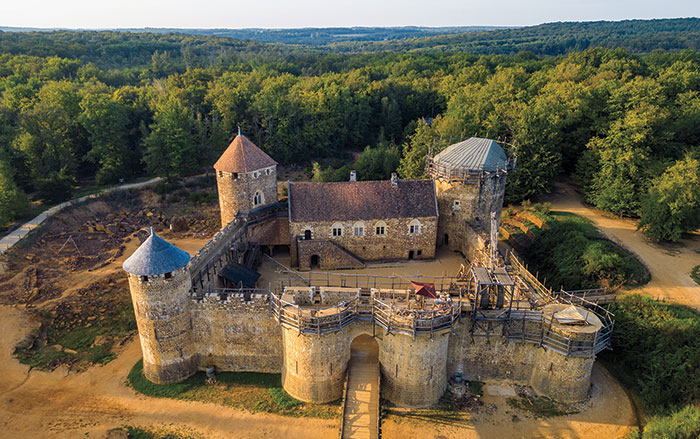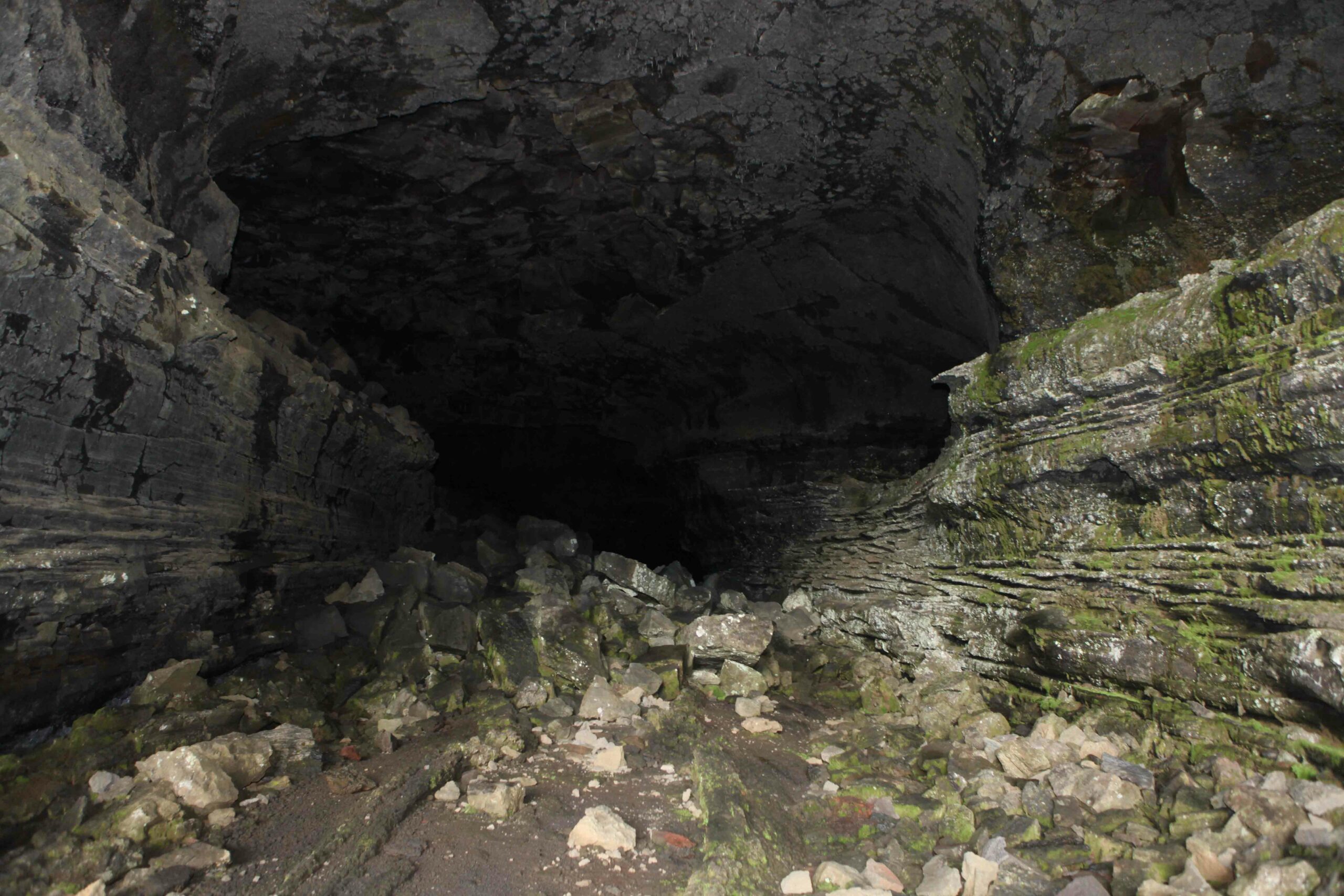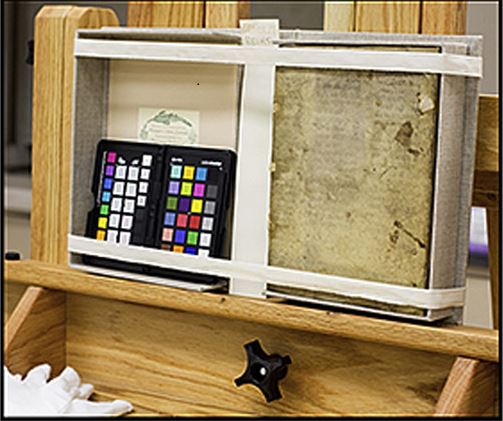
CHICAGO, ILLINOIS—Live Science reports that a sixth-century text has been found hidden in the binding of a sixteenth-century book of poetry. A team led by Emeline Pouyet and Marc Walton of the Northwestern University–Art Institute of Chicago Center for Scientific Studies developed a technique combining visible hyperspectral imaging and X-ray fluorescence to examine the binding of a 1537 copy of Works and Days, a book written by the ancient Greek poet Hesiod, when they noticed writing beneath the parchment covering the book board. They suspect the sixteenth-century bookbinder tried to remove the text on the board by washing and scraping it, but some of the ink remained and over time, it degraded the parchment placed over it. The new imaging technique revealed the recycled materials had originally been pages of the Roman law code, annotated with references to the church’s canon law in the margins, perhaps by a medieval university student. Pouyet and Walton say the new imaging technique will make it easier to examine delicate, recycled books when the powerful X-rays of a synchrotron are not available. For more on using new technology to read ancient texts, go to “The Charred Scrolls of Herculaneum.”


